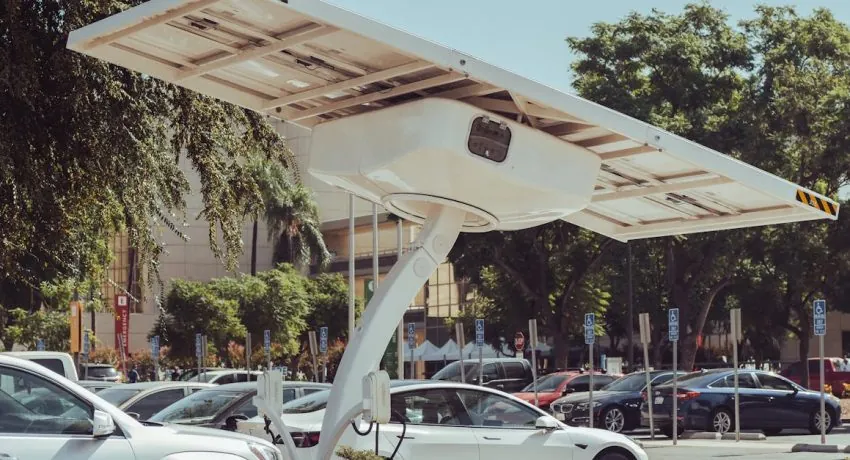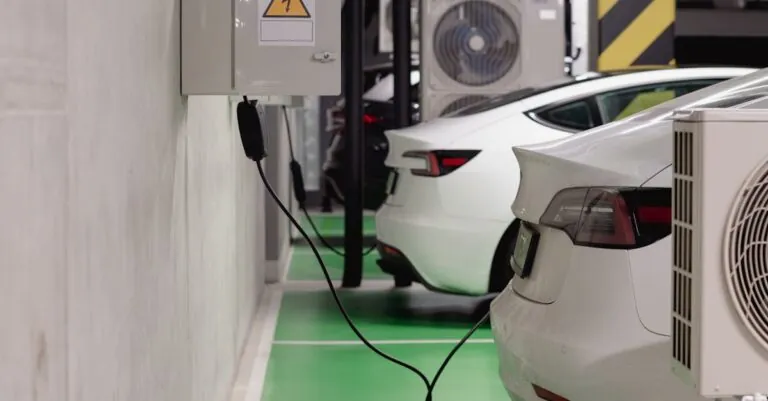In a world where waiting in line feels like a lifetime, ultra-fast EV chargers are here to save the day—and your sanity. Imagine zipping into a charging station and, before you can finish scrolling through your favorite cat memes, your electric vehicle’s battery is charged and ready to roll. These futuristic marvels are transforming the way we think about electric vehicle ownership and making range anxiety a thing of the past.
Table of Contents
ToggleOverview Of Ultra-Fast EV Chargers
Ultra-fast EV chargers deliver quick and efficient energy to electric vehicles. Charging rates typically reach between 150 kW and 350 kW, significantly reducing charging time. Most electric vehicles can achieve approximately 80% charge within 30 minutes at these stations.
Technological advancements in ultra-fast charging continue to emerge. The CCS (Combined Charging System) is the most common standard, enabling compatibility with various electric vehicle models. These chargers utilize advanced components like liquid cooling to manage heat and maintain high performance.
Infrastructure development for ultra-fast chargers is expanding rapidly. Many cities and highways now feature ultra-fast charging stations, allowing drivers to charge their vehicles conveniently. According to recent data, the number of ultra-fast chargers grew by 40% in the past year alone.
User experience benefits from the installation of ultra-fast chargers. Drivers encounter less range anxiety, knowing that they can recharge quickly during long trips. Charging networks, such as Electrify America and Ionity, are increasing their deployment of these chargers to enhance accessibility.
Understanding the impact of ultra-fast EV chargers on the electric vehicle market is crucial. As more consumers adopt electric vehicles, the need for fast and reliable charging solutions rises. Enhanced charging capabilities support the growth of electric vehicle adoption and contribute to a more sustainable future.
Technology Behind Ultra-Fast EV Chargers
Ultra-fast EV chargers utilize cutting-edge technology to enhance the electric vehicle charging experience. Charging speeds and infrastructure requirements play pivotal roles in their effectiveness.
Charging Speeds Compared
Charging speeds significantly differ among charger types. Ultra-fast chargers typically operate between 150 kW and 350 kW. This output allows electric vehicles to charge to about 80% in approximately 30 minutes. Many standard chargers, on the other hand, range between 3 kW and 22 kW, leading to longer wait times. The speed advantages of ultra-fast chargers alleviate range anxiety, making long-distance travel more feasible for EV owners. As charging technology advances, manufacturers strive to improve efficiency, enabling even faster charging times in the future.
Infrastructure Requirements
Infrastructure requirements are crucial for deploying ultra-fast EV chargers. Sufficient electrical capacity and a robust grid connection are essential for these charging stations. Most ultra-fast chargers necessitate a three-phase power supply, which enhances performance and efficiency. Locations must also provide adequate space for installing multiple charging units to cater to demand. Additionally, implementing liquid cooling systems helps manage the heat generated during rapid charging. As the number of ultra-fast chargers grows, investments in infrastructure development must proceed to support this expanding network.
Benefits Of Ultra-Fast EV Chargers
Ultra-fast EV chargers significantly enhance the electric vehicle charging experience. Their technology resolves common issues and creates a more efficient environment for users.
Reduced Charging Time
Reduced charging time stands as one of the primary benefits of ultra-fast EV chargers. Charging rates often reach between 150 kW and 350 kW, enabling most electric vehicles to achieve approximately 80% charge within 30 minutes. Traditional chargers, in contrast, operate at rates between 3 kW and 22 kW, leading to longer wait times. Significant advancements in design, such as the use of liquid cooling technologies, maintain optimal performance and prevent overheating. The availability of these chargers allows drivers to refuel their vehicles as quickly as they might refuel a gas vehicle. With the integration of the CCS standard, these chargers ensure compatibility across diverse electric vehicle models, further reducing downtime.
Increased Convenience
Increased convenience exemplifies another key advantage of ultra-fast EV chargers. Drivers can locate charging stations more easily due to their rapidly expanding infrastructure. A notable 40% increase in the number of ultra-fast chargers occurred over the past year, enhancing accessibility in urban and rural areas. Ultra-fast charging stations often feature multiple units at a single location, allowing several vehicles to charge simultaneously. Users experience reduced anxiety about range and charging availability. Many charging stations incorporate amenities such as rest areas or dining options, making the charging process more pleasant. As electric vehicle adoption rises, this convenience supports a seamless transition to sustainable transportation.
Challenges And Limitations
Ultra-fast EV chargers face several obstacles and limitations that influence their widespread adoption. These challenges vary from financial concerns to technical compatibility issues.
Cost Considerations
High installation costs represent a primary challenge. Deploying ultra-fast EV chargers requires significant investment, including equipment, electrical upgrades, and site preparation. In many cases, expenses can exceed $100,000 per unit, impacting the financial feasibility for businesses and municipalities. Operators often struggle to recover these costs, especially in locations where demand for charging is low. Even with growing electric vehicle adoption, return on investment takes time. Incentives and federal programs can aid financial burdens but don’t eliminate the fundamental cost challenge associated with ultra-fast charging infrastructure.
Compatibility Issues
Compatibility among electric vehicle models can create significant problems. While the CCS (Combined Charging System) aims to standardize connections, many vehicles still use different charging protocols. Not all electric vehicles support ultra-fast charging capabilities, limiting the number of users who can benefit from these stations. Consequently, manufacturers need to ensure vehicles are equipped to handle varying charger outputs. Fluctuations in charging rates can lead to inefficiencies, hindering user experiences. Greater industry collaboration is essential to address and minimize these compatibility issues, ensuring that ultra-fast chargers serve a broader range of electric vehicles.
Market Trends And Future Outlook
Rapid growth in the ultra-fast EV charger market indicates a strong demand for enhanced electric vehicle charging solutions. According to recent statistics, the market experienced a 40% increase in the number of ultra-fast chargers over the past year. Increased accessibility is reshaping the charging landscape, enabling more drivers to enjoy the benefits of quicker charging.
Electric vehicle adoption significantly impacts the demand for these charging solutions. As more consumers switch to electric vehicles, the need for fast and reliable charging becomes crucial. Major manufacturers are investing heavily in infrastructure, ensuring that ultra-fast charging stations are strategically placed in high-traffic areas, promoting convenience for users.
Technological advancements are driving innovation in ultra-fast chargers. Integration of CCS technology allows for compatibility across a wider array of electric vehicle models. Liquid cooling systems enhance performance by preventing overheating, ensuring that chargers consistently deliver optimal power levels.
Challenges persist despite the positive growth trends. High installation costs often exceed $100,000 per unit, which poses financial barriers for businesses and municipalities. Compatibility issues among electric vehicle models further complicate the situation, limiting the potential user base and leading to inefficiencies in charging capabilities.
Industry collaboration plays a vital role in overcoming these challenges. Partnerships between manufacturers, charging network providers, and government entities will help address compatibility issues and improve infrastructure. By working together, stakeholders can create a more inclusive environment for ultra-fast EV chargers, benefiting a larger audience and reinforcing the shift towards sustainable transportation.
The rise of ultra-fast EV chargers is transforming the electric vehicle landscape. By significantly cutting down charging times, these advanced stations are alleviating range anxiety and enhancing user convenience. As infrastructure continues to expand, more drivers will find accessible charging options that meet their needs.
However, challenges like high installation costs and compatibility issues remain hurdles to widespread adoption. Collaboration among manufacturers, charging network providers, and government entities is crucial for overcoming these barriers. With ongoing investments and strategic placements, the future of ultra-fast EV charging looks promising, paving the way for a more sustainable transportation ecosystem.




